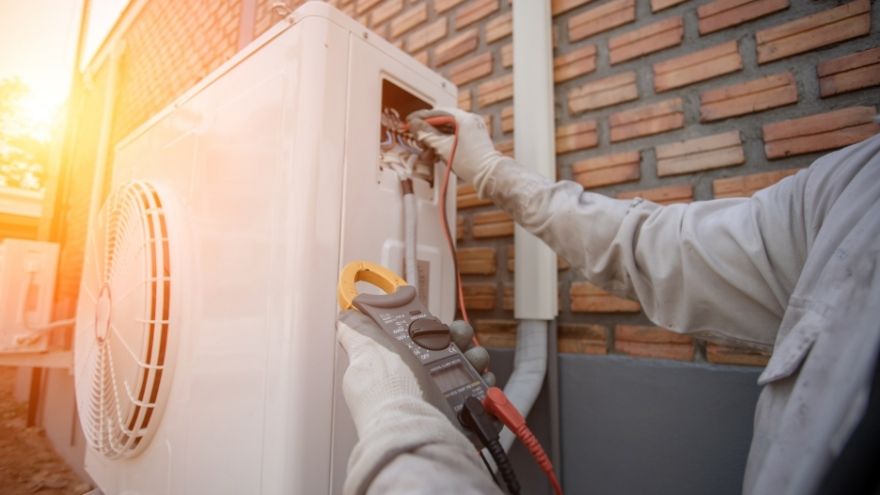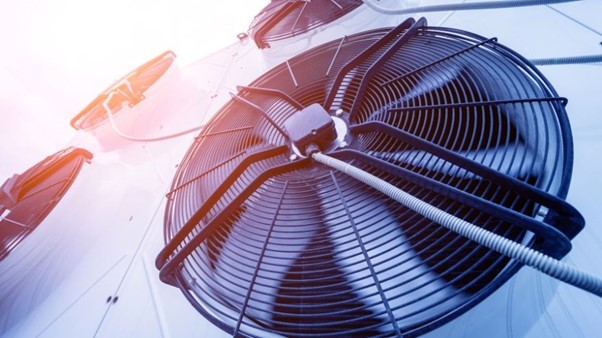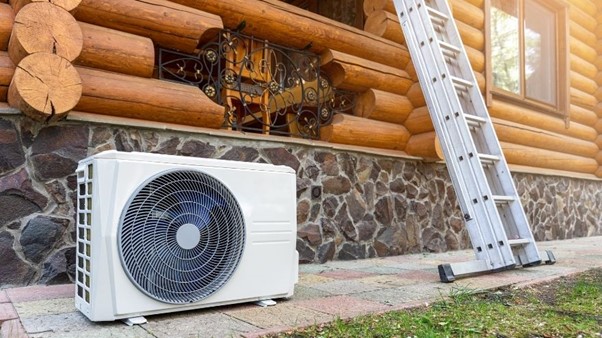A heat pump can be a very economical solution for any building. However, the condition for its optimal performance is the selection of the appropriate power of the device. This parameter will affect both the level of electricity consumption and the comfort of residents. Find out what criteria should be taken into account when calculating the power of a heat pump for your home!

From this article you will learn:
- how to choose the power of a heat pump,
- what does the power of the heat pump affect,
- how to adjust the power of the heat pump to the building.
Check out heat pumps at the Onninen wholesaler
Heat pump – characteristics
To properly select a heat pump for your home, you must thoroughly understand its principle of operation. It is a device that, with a relatively small share of electricity, collects and processes the thermal energy of air, ground or water. Its effectiveness depends primarily on the type of upper and lower sources. The smaller the temperature difference between them, the higher the efficiency of the heat pump.
The most economical will be ground heat pumps that power low-temperature heating systems, such as underfloor or wall heating. The ground temperature is relatively stable throughout the year, and the above-mentioned installations require a power supply of a maximum of 35°C. However, this type of solution is intended mainly for owners of new buildings with large enough plots.
A ground heat pump and surface heating are expensive investments that require serious interference with the plot and the structure of the building. Most investors will therefore choose air heat pumps, which require slightly larger amounts of electricity to operate. The air temperature in our climate varies greatly and can reach extreme levels of -20°C. Combined with the high supply temperature of the radiator installation (up to 55°C), this results in a significant difference, which requires a larger share of electricity to cover.
For this reason, many people decide to use an additional heat source. This solution involves establishing a bivalent temperature point at which the heat pump will be supported, for example, by a gas, coal or pellet boiler.
The selection of heat pump power will therefore largely depend on the above issues. However, a similar set of criteria should be taken into account in each case. Let's take a closer look at it now.

How to adjust the power of the heat pump to the specificity of the building?
The heating power demand of a heat pump can be determined by taking into account the following factors:
- average annual temperatures in a given location,
- building heat demand,
- surface of the object,
- annual water consumption.
How to identify each of them?
Lower source temperature and heat pump operating mode
The selection of a heat pump should depend on its operating mode. The first variant is a monovalent model, i.e. one in which the device is the only source of heat. Its required power is then determined by taking into account:
- climatic zone, which depends on the air temperature in a given region - in the case of air pumps,
- ground temperature, which also allows you to determine the required surface or length of the exchanger - in the case of ground pumps.
The second option is the bivalent mode, which assumes the use of two independent heat sources. The moment of switching between them depends on the climatic zone in which the device is to operate. Therefore, the temperature of the bivalent point is used in the calculations. This solution is intended for air heat pumps, which do not have to operate during periods of the lowest efficiency (less than 5 - 10% of the heating season).
Check out heat pumps at the Onninen wholesaler
The building's heat demand
Information about the temperatures in a specific location will allow you to determine the building's heat demand. Most often this type of data is provided by the designer at the construction stage, but if the owner does not have access to it, he can also make general calculations himself. The type and quality of thermal insulation will play an important role in this case:
- passive building - approx. 10 W/m 2 ,
- energy-efficient house - approx. 40 W/m 2 ,
- new building with good thermal insulation - approx. 50 W/m 2 ,
- house with normal thermal insulation - approx. 70 W/m 2 ,
- old building with poor thermal insulation - approx. 120 W/m 2 .
Building area
Having the above information, it is enough to obtain data on the area of the house. This is probably the easiest value to determine. However, remember not to ignore unheated rooms or rooms kept at a lower temperature than living rooms at this stage. Places of this type will always contribute to greater or lesser heat losses.
Water consumption
The last parameter to take into account when selecting a heat pump is the consumption of domestic hot water. This criterion can be omitted if the device is to be used only to power the heating installation. However, if it will be used to prepare large amounts of domestic hot water, slightly different data must be used in the calculations.
Namely, it is necessary to determine how much water all residents use in one day. On average, it is assumed to be 50 liters of hot water at a temperature of 45°C per person. This amounts to approximately 250 W per year. This value should be multiplied by the number of water users. This type of calculation is performed especially in the case of non-standard hot water consumption, such as large bathtubs, jacuzzis or a larger than standard number of inhabitants (e.g. guesthouses, etc.).
Heat pumps in the wholesale offer
House heating demand - summary
Using the components listed above, you can quite easily determine the overall thermal power demand of the building. Just use the simplified formula:
heating power = heat demand x house area + power for domestic hot water
However, it is worth remembering that this scheme should be adapted to the adopted operating mode of the heat pump. If it is to operate in a monovalent model (usually a ground pump), the calculated value corresponds to its final power. However, if it works in bivalent mode (usually an air pump), the result should be additionally multiplied by the percentage of its share in the heating season.
Exchange benefits in the new OnnTop loyalty platform!
Which heat pump for the heating system? Choose from Onninen!
Now that you know how to choose the power of a heat pump, check out the offer of specific models available in our online wholesaler. They will perfectly match the diverse environmental conditions and individual needs of your customers. The Onninen range includes both ground and air heat pumps. Some of them are also equipped with a domestic hot water tank
The most interesting proposals from our offer include:
- Immergas MAGIS PRO 9 V2 - split air heat pump, without hot water tank,
- Galmet Maxima 42 GT - ground heat pump for central heating and hot water, without a tank,
- Aiwa 12 kW - 3-phase monoblock air heat pump,
- Vaillant VWL 125/5AS - split air-water pump, with domestic hot water tank
These are just some examples of Onninen's extensive offer. A wide selection will make it easy to match the heat pump's power to a specific heating installation!

